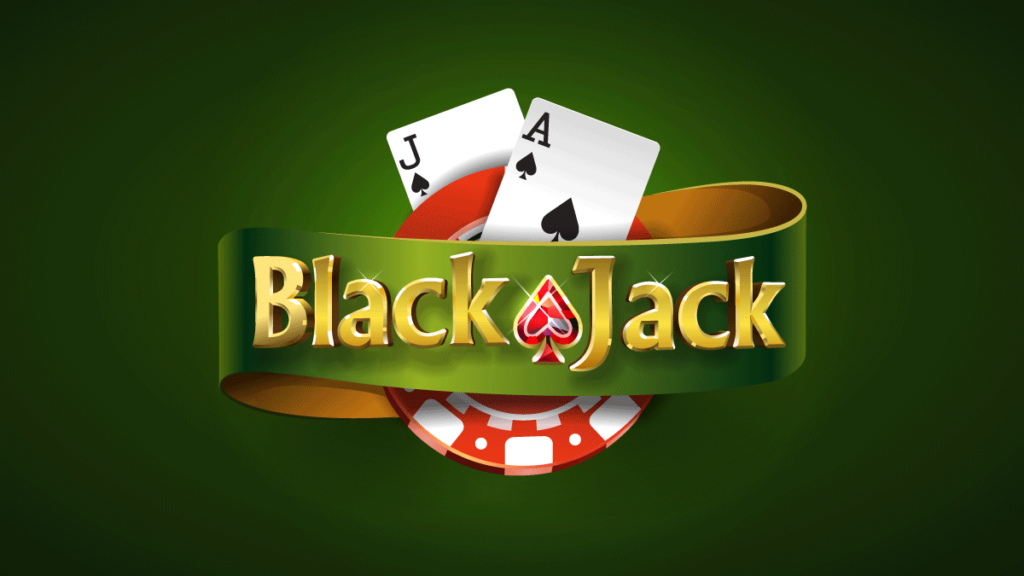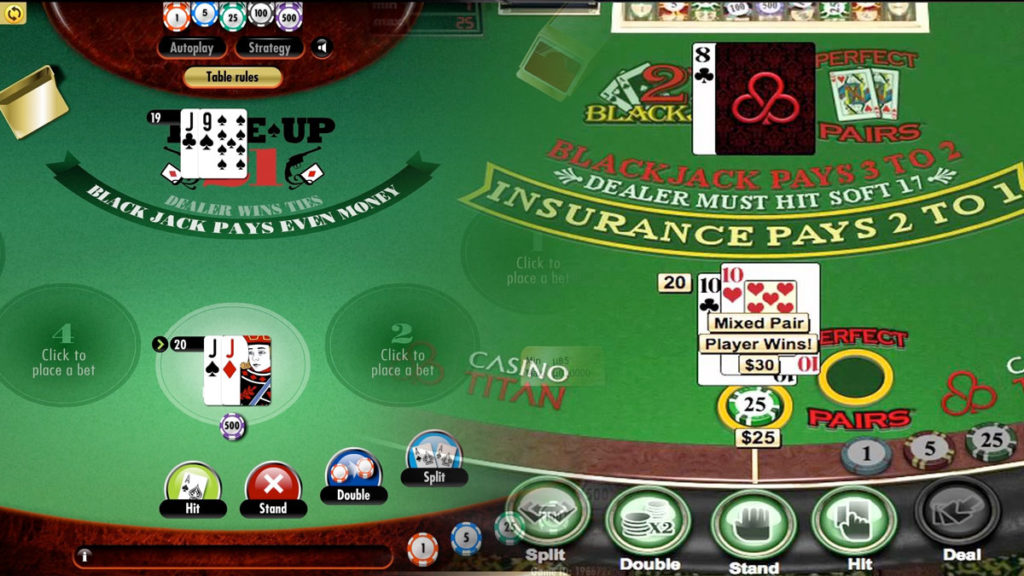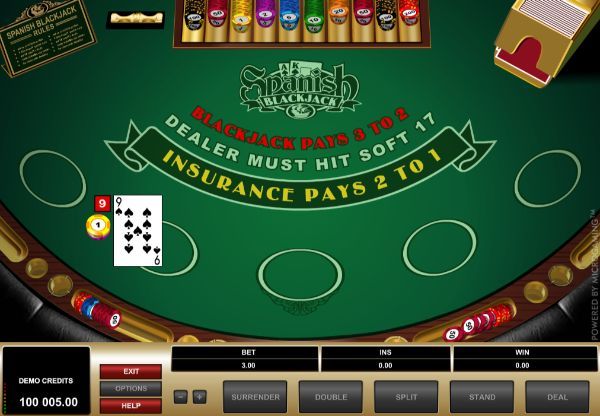Welcome to the thrilling world of Blackjack, one of the most popular and iconic casino games. Also known as “21,” Blackjack is a classic card game that combines strategy, skill, and a dash of luck. The objective is simple: to beat the dealer’s hand without exceeding a total value of 21. It’s a game that has captivated players for decades, offering an exhilarating experience that keeps you on the edge of your seat. As the cards are dealt, you’ll be faced with strategic decisions: should you hit, stand, double down, or split? The tension builds as you navigate the table, aiming to achieve the perfect hand and outplay the dealer. Whether you’re a seasoned gambler or a newcomer to the casino scene, Blackjack offers endless excitement, making it a timeless favorite among players worldwide. So, grab a seat, place your bets, and get ready for an unforgettable gaming adventure.
What is Blackjack?

Blackjack, often referred to as twenty-one, is a popular card game played in casinos worldwide. The objective of the game is to beat the dealer by accumulating a hand value as close to 21 as possible without exceeding it. Each card in Blackjack carries a specific value: numbered cards retain their face value, face cards (King, Queen, and Jack) are worth 10 points each, and the Ace can be counted as either 1 or 11, depending on the player’s choice.
The Origins of Blackjack
Blackjack is a popular card game that is believed to have originated in France in the 18th century. The game was originally known as “Vingt-et-Un,” which translates to “twenty-one” in English. It is thought to have evolved from a combination of two earlier French games: “Chemin de Fer” and “French Ferme.”
Chemin de Fer was a popular game during the 18th century, played in French casinos. It involved players taking turns to be the banker and trying to achieve a hand with a total value closest to nine. French Ferme, on the other hand, was a gambling game where players received cards and tried to obtain the closest total to 31.
The basic objective of Vingt-et-Un was to reach a hand value of 21 without going over. Initially, the game was not widely known outside of France. However, during the 19th century, it gained popularity among French colonists in North America, particularly in New Orleans.
In an effort to attract more players to the game, gambling houses in New Orleans began offering bonus payouts. One such bonus was a 10-to-1 payout for a hand consisting of the ace of spades and a black Jack (either the Jack of clubs or the Jack of spades). This hand became known as “blackjack,” and the name stuck even after the bonus payout was eventually discontinued.
As the game spread throughout North America, it underwent some modifications. For example, the rules were adjusted to allow players to see one of the dealer’s cards, which added an extra element of strategy to the game.
Blackjack gained even more popularity in the early 20th century when gambling was legalized in Nevada. Casinos in Las Vegas began offering the game, and it quickly became a staple of the gambling scene. Over time, various rule variations were introduced to the game, leading to different strategies and player preferences.
Today, blackjack is played in casinos worldwide and has also found its way into online gambling platforms. The game’s simple yet strategic nature, combined with the potential for skilled players to gain an edge over the house, has contributed to its enduring popularity.
How to Play Blackjack
The Setup
Before diving into the gameplay, let’s familiarize ourselves with the basic setup of a Blackjack table. A typical Blackjack table consists of a dealer who represents the casino and one or more players. The game is played with one or more standard decks of 52 cards. At the beginning of each round, players place their bets within the designated betting areas on the table.
Dealing the Cards
Once the bets are placed, the dealer proceeds to deal the cards. Each player, including the dealer, receives two cards. In most variants of Blackjack, the dealer’s first card is dealt face up, allowing players to make informed decisions based on the visible card. However, the dealer’s second card, known as the “hole card,” is dealt face down.
Hand Actions
Once the cards are dealt, players have several options to choose from to advance their gameplay. Here are the key hand actions in Blackjack:
- Hit: If a player decides to “hit,” they request an additional card from the dealer. Players can continue to hit until they are satisfied with their hand or until their hand exceeds 21, resulting in a bust.
- Stand: Choosing to “stand” means the player is satisfied with their current hand and does not wish to receive any more cards. The turn then moves to the next player or the dealer.
- Double Down: Some variants of Blackjack allow players to “double down” on their initial hand. This means the player doubles their initial bet and receives one additional card.
- Split: When a player is dealt a pair (two cards of the same rank), they have the option to “split” their hand into two separate hands. This requires an additional bet equal to the initial wager.
The Role of the Dealer
After all, players have completed their hand actions, it’s the dealer’s turn to play. The dealer follows a set of predefined rules, commonly known as the “house rules.” The dealer must draw additional cards until their hand reaches a value of 17 or higher. If the dealer’s hand exceeds 21, all remaining players who haven’t busted are declared winners.
Blackjack Variants

Classic Blackjack
Classic Blackjack, also known as “21,” is a popular card game where the goal is to get a hand value of 21 or close to it without going over. Players compete against the dealer using one or more decks of 52 cards.
At the start, players and the dealer each receive two cards. Players can choose to “hit” for another card or “stand” to keep their hand. Card values are straightforward: Aces can be 1 or 11, face cards are 10, and others have their face value. Going over 21 is a “bust” and means losing.
Getting 21 with the first two cards (an Ace and a 10-point card) is a “blackjack” and wins 1.5 times the bet. If the dealer also has a blackjack, it’s a tie. The dealer must hit until reaching at least 17. If the dealer busts, players win. Otherwise, the highest hand wins, with ties resulting in a push.
Vegas Downtown Blackjack
Vegas Downtown Blackjack is a popular variation found in Las Vegas casinos. It shares similarities with Classic Blackjack but has a few notable distinctions. In this variant, two decks of cards are used instead of one. The dealer is required to hit on a soft 17, giving them a better chance to improve their hand.
Players in Vegas Downtown Blackjack enjoy more options. They can double down on any two cards, doubling their bet and receiving an extra card. Additionally, players can split their hands up to three times, creating separate hands from pairs and getting an additional card for each. However, Aces can only be split once, and surrendering is not allowed, which sets it apart from other versions.
European Blackjack
European Blackjack, a favored variation in European casinos, bears similarities to Classic Blackjack but boasts several notable distinctions. In this variant, the dealer initially deals themselves one card face up and another face down. The dealer refrains from checking for blackjack until all players have completed their turns. This contrasts with Classic Blackjack, where the dealer checks for blackjack immediately after dealing the cards.
European Blackjack also introduces limitations on player actions. Surrendering and re-splitting hands are not permitted. Once a player splits their hand, further splitting is prohibited, and surrendering to reclaim half of the original bet is not an option, as seen in certain other variations.
Pontoon
Pontoon, a popular variation of the game, shares similarities with Blackjack but possesses distinct rules and gameplay elements. In Pontoon, the objective remains to obtain a hand total of 21 or closest to it, without exceeding it. Notably, all cards are dealt face down, concealing the dealer’s hand. Players must base their decisions solely on their own hand value.
In Pontoon, players can choose to hit, stand, or double down on any two cards. Additionally, they have the option to split their hand up to three times, generating a maximum of four hands. However, Aces can only be split once. One significant difference in Pontoon is the treatment of a hand totalling 21, known as a “Pontoon.” Unlike Blackjack’s 3:2 payout, Pontoon offers a 2:1 payout. Furthermore, if the dealer also has a Pontoon, the dealer emerges victorious, disregarding the players’ hands.
Another unique aspect is the “five-card trick.” If a player holds five cards without exceeding 21, they automatically win, even if the dealer’s total surpasses theirs. In Pontoon, the dealer must hit on a soft 17, requiring them to draw an additional card when holding an Ace and a six, for instance. This deviates from certain variants where the dealer may choose to stand on a soft 17.
Spanish 21

Spanish 21, a popular variation, introduces a few notable differences from Classic Blackjack. Played with a 48-card deck (without the four ten-value cards), it offers unique rules and strategies.
In Spanish 21, players have the chance to win bonus payouts for specific hands like a five-card or six-card 21, adding excitement to the game. Doubling down is permitted on any number of cards, even after splitting. Additionally, players can surrender their hand after doubling down and receive half of their original bet back, making it a more flexible variant.
A distinct feature of Spanish 21 is the option to place a “Match the Dealer” side bet, predicting a match between the player’s initial cards and the dealer’s upcard. Successful bets result in bonus payouts. Moreover, in Spanish 21, the dealer must hit on a soft 17, requiring them to draw an additional card when holding an Ace and a six. This differs from some other versions where the dealer may stand on a soft 17.
Blackjack Strategies and Tips
Mastering the game of Blackjack requires not only luck but also skill and strategy. Here are some expert strategies and valuable tips to help you improve your chances of winning:
Basic Strategy
Mastering the basic Blackjack strategy is essential for players seeking to make optimal decisions in every hand. This strategy, derived from mathematical calculations, serves as a valuable guide, leading players towards statistically favorable actions. By familiarizing oneself with the basic strategy, players can significantly enhance their chances of success at the Blackjack table. Embrace this fundamental tool and elevate your Blackjack skills to new heights.
Card Counting
Card counting is a technique utilized by experienced players to monitor the ratio of high-value to low-value cards remaining in a deck during a game of Blackjack. By doing so, players can make more informed decisions on their bets and gameplay. It is important to note that card counting itself is legal, but casinos implement measures to hinder or discourage this practice, such as using multiple decks, frequent shuffling, or asking suspected card counters to leave. Successful card counting requires skill, concentration, and a deep understanding of the game, making it a strategy utilized by only a small number of players.
Progressive Betting
Progressive betting is a strategy that revolves around adjusting your bet size based on previous outcomes. After a win, the strategy suggests increasing the bet, while after a loss, the bet size is reduced. The goal is to capitalize on winning streaks while mitigating losses during unfavourable runs. Different players adopt varying approaches, with some doubling their bet size after each win, while others opt for more conservative methods by incrementing the bet by a smaller percentage. It’s important to note that while progressive betting can be enticing, it doesn’t guarantee to win and should be used with caution.
Bankroll Management
Set a budget for your Blackjack sessions and stick to it. Practice proper bankroll management by wagering only a small percentage of your total bankroll on each hand. This approach ensures that you can withstand any fluctuations in luck without depleting your funds.
Table Selection
When playing Blackjack, it is advantageous to carefully select the tables you play at. Look for tables with favorable rules that offer better odds for the player. For example, choose tables that allow doubling down after splitting, as this gives you the opportunity to maximize your potential winnings. Additionally, tables that use fewer decks are preferable, as they lower the house edge and increase your chances of success. By being selective about table selection, you can enhance your overall Blackjack experience and improve your winning potential.
Avoid Insurance Bets
It is advisable to refrain from placing insurance bets in Blackjack. These bets are typically offered when the dealer’s face-up card is an Ace. However, it is generally recognized that insurance bets have a negative expected value over the long term. As a result, it is more favorable to focus on the basic Blackjack strategy and make decisions based on the value of your own hand rather than taking insurance. By avoiding insurance bets, you can maximize your chances of success in the game.
Practice Online
To hone your Blackjack skills, make use of online casinos that provide free or low-stakes Blackjack games. These platforms offer an ideal environment for practice, strategy testing, and skill development. By taking advantage of these online resources, you can gain valuable experience and enhance your confidence before venturing into land-based casinos. The opportunity to refine your gameplay without the pressure of high-stakes betting is invaluable and can greatly improve your performance at the Blackjack table.
FAQs
Conclusion
In conclusion, Blackjack is a captivating casino game that combines strategy, skill, and a bit of luck. By understanding the rules, mastering basic strategy, and employing effective techniques, you can enhance your gameplay and increase your chances of winning. Remember to play responsibly, set limits, and enjoy the thrill of the game. So, gather your chips, take a seat at the Blackjack table, and let the cards reveal your destiny!
